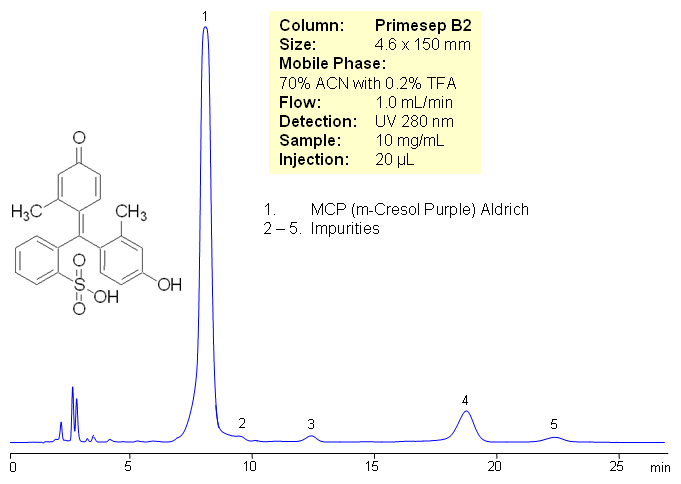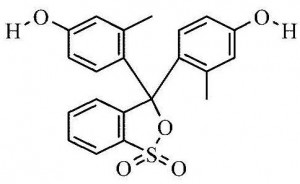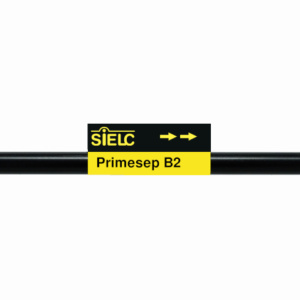| CAS Number | 2303-01-7 |
|---|---|
| Molecular Formula | C21H18O5S |
| Molecular Weight | 382.430 |
| InChI Key | OLQIKGSZDTXODA-UHFFFAOYSA-N |
| LogP | 3.44 |
| Synonyms |
|
Applications:
HPLC Separation of m-Cresol Purple and Related Impurities
August 22, 2008

m-Cresol purple is indicator dye for spectrophotometric pH measurements. These measurements are widely used in oceanic CO2 research. Purity of the indicator is a critical issue in accurate determination and can cause uncertainty in pH measurement. Numerous attempts to purify m-cresol purple failed due to lack of separation or low loadability of HPLC columns. Primesep B2 method separates 4 major impurities from main compound. All impurities are well separated. m-Cresol Purple is hydrophobic and acidic in nature. Parent compound and impurities are retained based on reverse phase and anion-exchange mechanisms. Method can be used for high loadabiity preparative separation of acidic dyes.
Application Column
Primesep B2
The Primesep family of mixed-mode columns offers a wide variety of stationary phases, boasting unprecedented selectivity in the separation of a broad array of chemical compounds across multiple applications. Corresponding Primesep guard columns, available with all stationary phases, do not require holders. SIELC provides a method development service available to all customers. Inquire about our specially-tailored custom LC-phases for specific separations.
Select options


